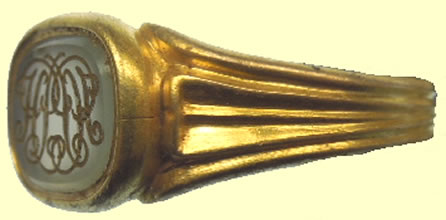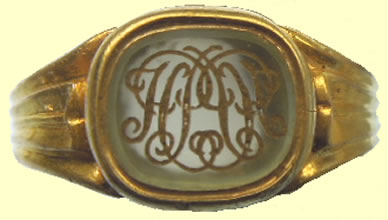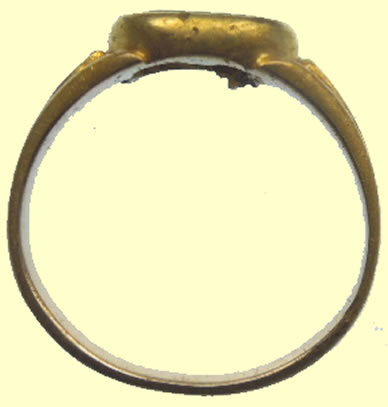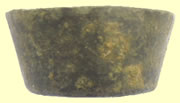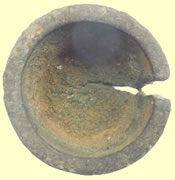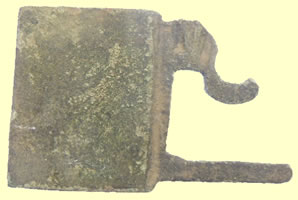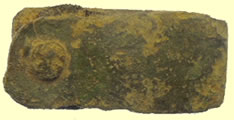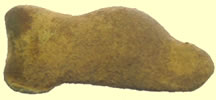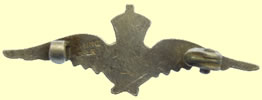

Metal detecting holidays in England with the World's most successful metal detecting club.
Twinned with Midwest Historical Research Society USA
| 2014 Sept finds page 2 | |||
|
|||
Stunning Georgian gold signet ring - no hall marks - reported to museum as potential treasure if pre 1714 HK ? |
|||
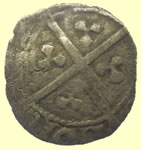 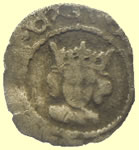 |
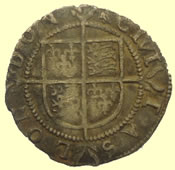 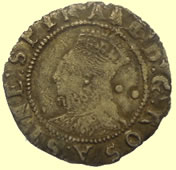 |
||
1279 Edward 1st hammered silver farthing - Type 28-31 Obv + ED **** REX Rev **/DON - London mint |
1582-3 Elizabeth 1st hammered silver half groat - Bell mint mark | ||
 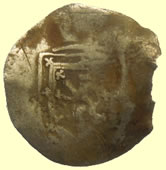 |
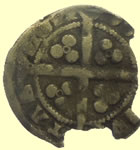  |
||
| Scottish 1602 James VI hammered silver 1/8th Thistle Merk | 1351- 61 Edward III hammered silver penny - Pre Treaty - annulet in all 4 qtrs on reverse Rev **/TAS/LON/** London mint |
||
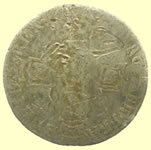 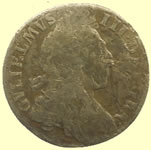 |
 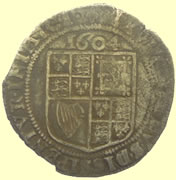 |
||
| 1696 William III milled silver sixpence | 1604 James 1st hammered silver sixpence | ||
 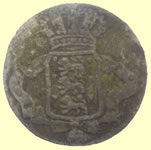 |
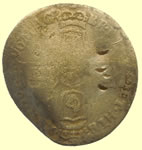 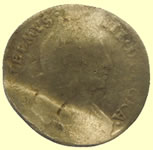 |
||
1762 Danske 1 skilling milled silver Denmark |
1696 William III milled silver sixpence | ||
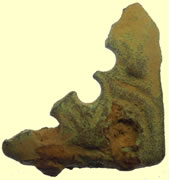 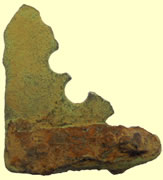 |
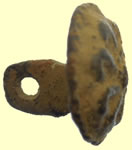 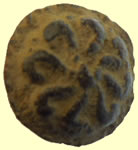 |
||
| c10thC Saxon stirrup mount | 16thC Tudor button | ||
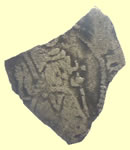  |
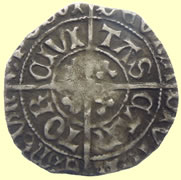 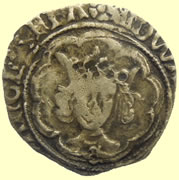 |
||
1490-1504 Henry VII hammered silver sovereign penny, No initial mark Archbishop Rotherham issue - key beneath shield Obv King entroned holding septre and orb,two double pillars Rev York mint |
1464-1470 Edward IV hammered silver halfgroat - Rose mint mark Light Issue Royal Obv EDW *** ANGL Z FRA Rev CIVI/TAS/CAN/TOR - Canterbury mint |
||
  |
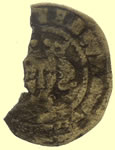 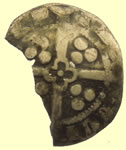 |
||
1247 Henry III hammered silver voided half penny Rev NIC/OLE - Moneyer Nicole of London |
1327 Edward III hammered silver penny Quatrefoil with pellet in reverse cross Obv +EDW*** Rev /TAS/**/RACI - York mint |
||
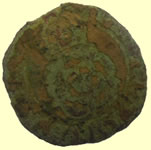 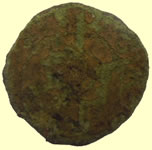 |
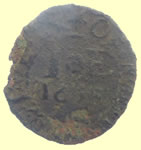 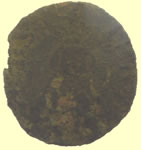 |
||
| 1634 Charles 1st hammered copper rose farthing | 1653 Jeremy Erds of Manningtree Esex hammered copper trade farthing | ||
 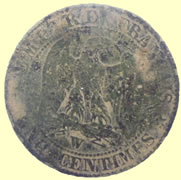 |
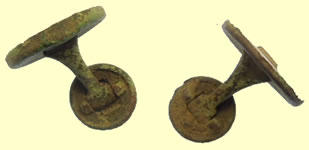 |
||
| 1856 French Napoleon milled copper coin | Pair of Georgian cufflinks | ||
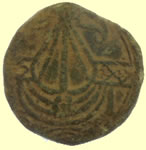  |
 |
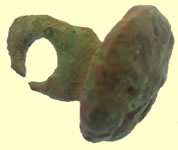 |
|
| 16thC uniface coin weight from Germany - no rose, h or standing figure | Foreign Army button ? Continental type crown | 16thC Tudor button | |
 |
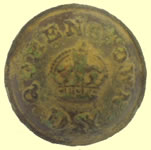 |
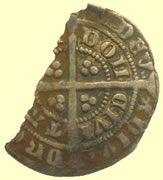  |
|
| RN Capt / Commander - 1901 Other Ship's Officers - 1901 |
WW1 Queens own regiment button | July 1357 - June 1358 Edward III hammered silver half groat - Pre Treaty Series G - Ga type crown 9 arches to tressure - fleurs on cusps, none over crown Obv EDWARDVS REX o **** Rev **/DOII/CIVI/TAS - London mint |
|
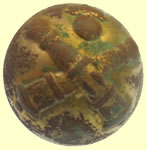 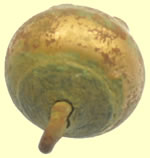 |
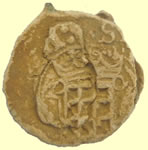 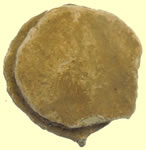 |
||
French artillery 1914-18 |
Post medeival lead bale seal | ||
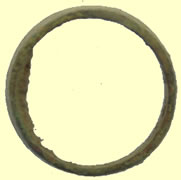 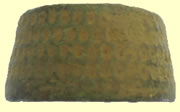 |
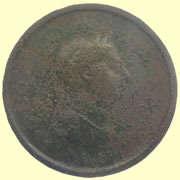 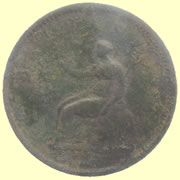 |
||
| 15thC open topped thimble | 1806 George III milled copper penny | ||
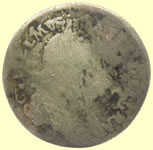  |
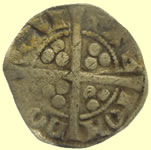 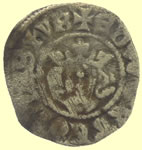 |
||
| 1696 William III milled silver sixpence | 1279 Edward 1st hammered silver penny - pellet on neck - Cross pattee Obv + EDWAR ANGL DNS HYB Rev CIVI/TAS/LON/DON - London mint
|
||
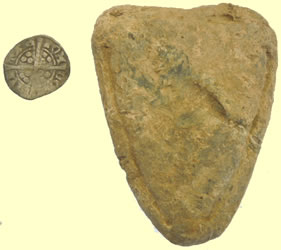 |
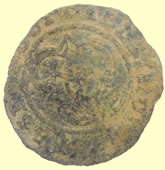 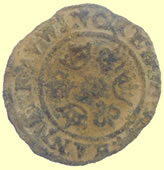 |
||
Huge medieval heraldic shield type lead trade weight Chevrons |
1586 Hans Krauwincel II Rose orb Jeton HANNS KRAVWINCKEL IN NVRENB |
||
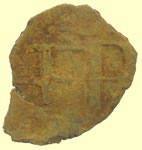 |
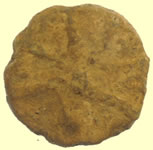 |
 |
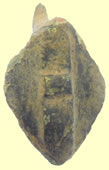 |
| 17thC lead token | 15thC lead token | 1500-1700 mount | 1500-1700 mount |
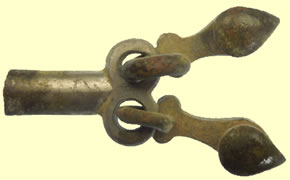 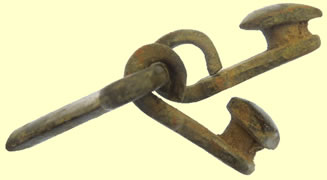 |
|||
| Georgian spur and fittings | |||
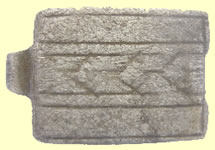 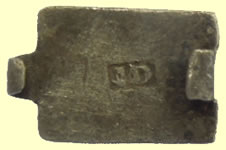 |
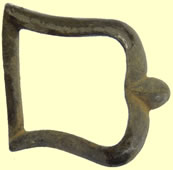 |
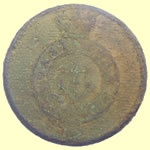 |
|
| 18thC silver clog fastener - Maker JD | Post medieval cast copper alloy asymmetrical buckle frame, some with with a pointed knop at the end of the loop The buckle dates from c.1575 - 1700 |
19thC coast guard button | |
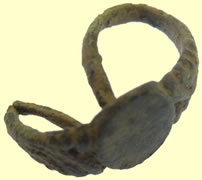 |
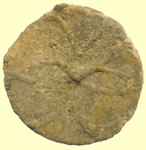 |
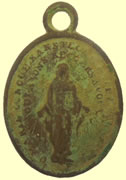 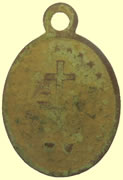 |
|
| Georgian copper signet ring | 17thC lead token | Victorian religious pendant | |
|
  |
||
| Victorian brooch | Victorian gilded cuff link | ||
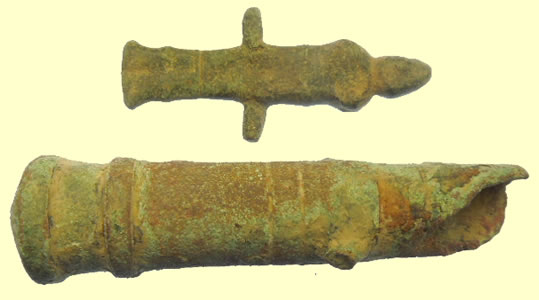 |
|||
| Little and large of 18thC toy cannons | |||
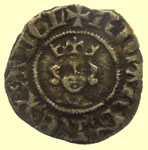 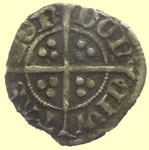 |
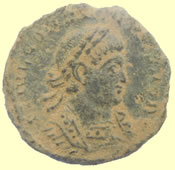 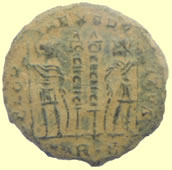 |
||
1377-1399 Richard II hammered silver half penny Obv + RICARDx REX x ANGL Rev CIVI/TAS/LON/DON- London mint |
Stunning condition 4thC Roman bronze sent for ID This is an easy one and a good example of how a couple clear letters in the right place can be just as good as a clear name in the obverse legend. This is a billon centenionalis of Constantius II (son of Constantine I) as Caesar - and although the majority of his name is illegible, the praenomia FL IVL (Flavius Julius) are adequately clear. On this type, those could only be part of the legend for Constantius II as Caesar, bust right, laureate and cuirassed. The full obverse legend would be FL IVL CONSTANTIVS NOB C. Mark |
||
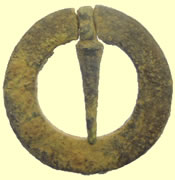 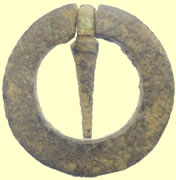 |
 |
||
| Medieval annular brooch | Georgian clay wig curler By the late seventeenth century these cylinders were being fashioned from pipe clay which had been fired to retain the desired shape. These curlers were rounded at each end and were thinner in the middle, thus helping to retain the hair on the curler. |
||
  |
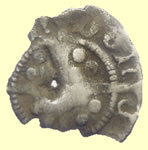 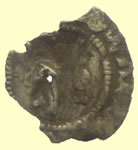 |
||
| Medieval hanging harness pendant | 1279 Edward 1st hammered silver half penny Obv EDWAR *** Rev /DON/CI** - London mint |
||
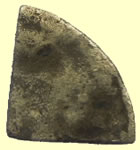  |
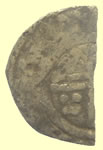 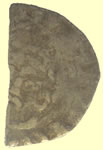 |
||
| 1247 Henry III hammered voided long cross silver farthing | 1216 Henry III hammered silver short cross half penny | ||
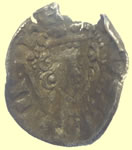 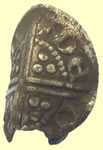 |
 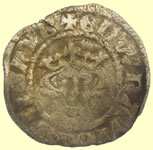 |
||
1247 Henry III hammered voided long cross penny Rev /NDE - London mint |
1299- 1300 Edward 1st hammered silver penny - Class 9b Obv + EDWR ANGL DNS HYB Rev CIVI/TAS/EBO/RACI - York mint |
||
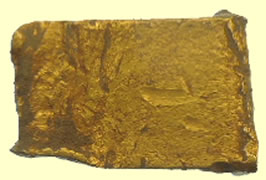 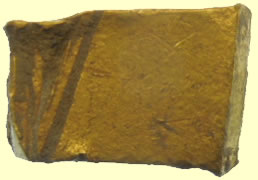 |
|||
Ancient gold ingot - reported to museum as treasure 3.37g, 12.5mm L |
|||
 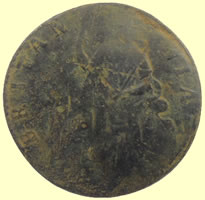 |
|||
| Stunning condition 1688 -94 William and Mary milled copper penny | |||
 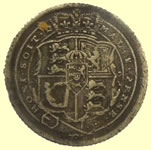 |
 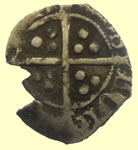 |
||
| 1816 George III milled silver sixpence | 1485 Henry VII hammered silver halfpenny - Single Arched crown- Cross ends fourchee Obv hENRIC DI GRA REX Rev CIVI/TAS/LON/DON -London mint |
||
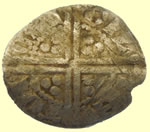 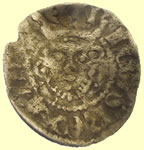 |
  |
||
1247 Henry III hammered silver voided long cross penny - Class 5 Obv hENRICVS REX III Rev GIL/BER/TON/CAN - Gilbert of Canterbury mint |
1327 Edward III hammered silver half groat Rev CIVI/TAS/LON/DON -London mint |
||
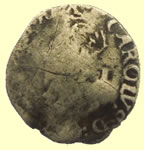 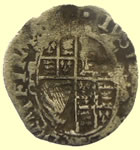 |
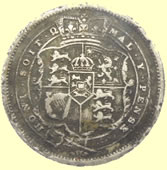  |
||
1641-3 Charles 1st hammered silver penny - mintmark dot 'triangle and circle' King had left London and Parliament stuck these coins |
1816 George III milled silver shilling | ||
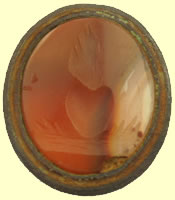 |
 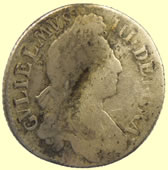 |
||
| Georgian intaglio | 1696 William III milled silver shilling | ||
 |
|
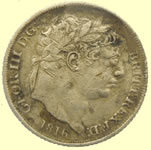 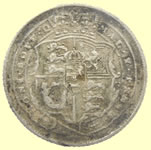 |
|
Georgian trade weight Crow G cipher London |
18thC bulluin cup weight | 1816 George III milled silver sixpence | |
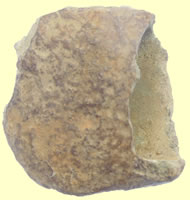  |
|||
| 850 BC Bronze Age socketed axe fragment | |||
 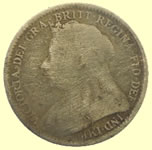 |
  |
||
| 1894 Victoria milled silver three pence | 1485 - 1509 Henry VII hammered silver sovereign penny - Bishop Fox issue | ||
  |
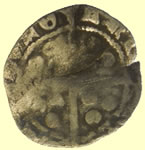  |
||
| Medieval hammered silver long cross penny | 1351- 61 Edward III hammered silver long cross penny- Pre treaty Obv *****REX Rev DVNE/LMIS - Durham mint |
||
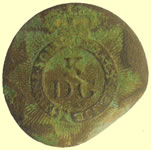 |
 |
 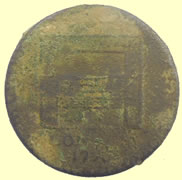 |
|
| 19thC Kings Dragoon guards button | 1500-1700 mount | 1795 Condor token This 1795 British copper halfpenny token was designed by Thomas Wyon of the Peter Kempson and Sons mint in Birmingham, England, for the London firm of Clark and Harris, dealers in stoves and fireplace grates. The obverse displays a bust of Washington facing right with the legend "G. WASHINGTON. THE FIRM FRIEND TO PEACE & HUMANITY." The reverse displays a large grate (a screen put in front of a fireplace) with LONDON and 1795 below. The reverse legend reads "PAYABLE BY CLARK & HARRIS 13. WORMWOOD St. BISHOPSGATE ." The "Grate" token is found in both the large button and the rarer small button varieties; referring to the relative size of the three buttons on Washington's coat. Most examples have a diagonally reeded edge but about 30 of the large button variety exist with the lettered edge: "PAYABLE AT LONDON LIVERPOOL OR BRISTOL." |
|
 |
 |
 |
|
| 18thC silver clog fastener | 1500-1700 mount | 15thC casket key | |
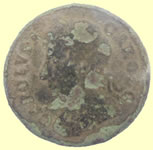 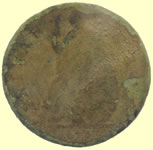 |
 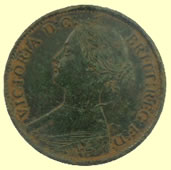 |
||
| 1670 Charles II milled copper farthing | 1861 Victoria milled copper half penny | ||
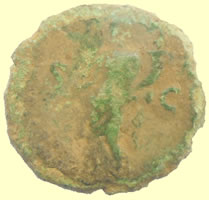  |
|||
Big 2ndC Roman bronze coin sent for ID I can tell you about it in some generalities, but I'm afraid I won't be able to be as specific as I like to be - there are just not quite enough specific identifying characteristics visible. This could be any one of the 3 Flavian emperors: Vespasian, 69-79 AD, Titus as either Caesar (69-79) or Augustus (79-81) or Domitian's earlier portraits as Caesar, (69-81) which were designed to make him look as much like his father and brother as possible. After Titus' death when he took over the whole show on his own, his portrait changes signficantly, giving him a much longer neck and more "distinguished" set of facial features. Vespasian had been the first non-aristocratic emperor and Domitian was definitely attempting to correct the earthy image Vespasian had cultivated in order to help him do a bit of social butterflying. I'm not certain, however, that it's a sestertius - if you look along the top of the head, you can see what appears to me to be the tips of the spiky radiate crown of Sol which distinguished the Dupondius from the As. You didn't give me any metrics, so this is only a guess. A full-sized Flavian-era Dupondius is as large and heavy as many later sestertii would be in the time of the Antonines and later. The reverse, unfortunately, is not remarkable enough to clearly point towards any one of the three Flavians. It appears most likely to be Pax standing left holding olive-branch and cornucopiae, but it could be Felicitas, who holds a caduceus rather than a branch. All 3 used Pax and Felicitas repeatedly during their reigns. The remaining details are just a little too uncertain with that largish area of exposed patina surface to be certain of just which attribute the right-hand is holding. Mark
|
|||
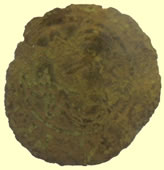 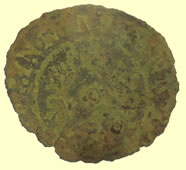 |
 |
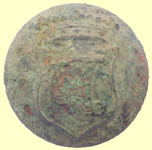 |
|
1586 Hans Krauwincel II Rose orb Jeton HANNS KRAVWINCKEL IN NVRENB |
15thC lead token | 19thC Titled family liver button | |
 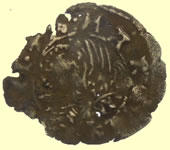 |
  |
||
| Venetian Soldino issued by Doge Michele Steno (1400-1413). Obv: MICHAEL STEN' DVX (Michele Steno, Doge). Doge standing left, holding standard. Rev: S MARCVS VENETI (Saint Mark of Venice). Winged and nimbate lion of Saint Mark facing |
16thC Tudor clothing fastener | ||
 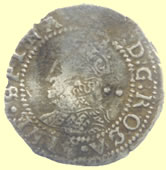 |
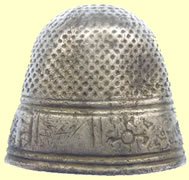 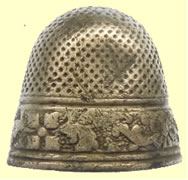 |
||
| 1602 Elizabeth 1st hammered silver half groat - 1 mint mark | Georgian silver thimble | ||
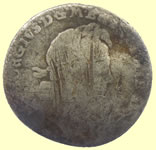 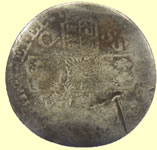 |
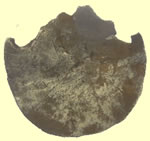 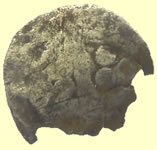 |
||
| 1714- 27 George 1st milled silver sixpence - South Seas company love token | Medieval hammered silver long cross penny | ||
  |
|||
| 1806 George III milled gold third guniea | |||
  |
  |
||
1279 Edward 1st hammered silver long cross penny Rev /LON **** London mint |
1279 Edward 1st hammered silver long cross penny Obv EDWA********* Rev CIVI/TAS ***** |
||
 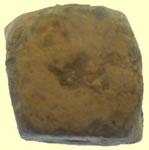 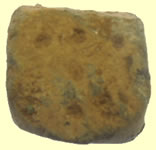 |
|||
| Post medieval lead dice | |||
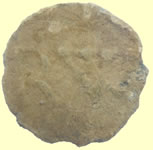 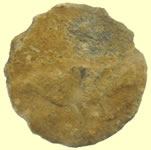 |
 |
 |
|
17thC lead trade token Ob RW Rev Bird |
14thC Composite two piece copper alloy button with seperate drawn wire copper alloy wire shank |
RN Petty Officer - 1891 | |
  |
|||
| Unknown widget | |||
 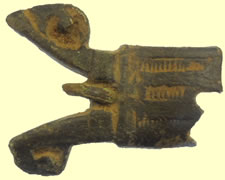 |
|||
| Very unusual early medieval zoomorphic style buckle with integral plate | |||
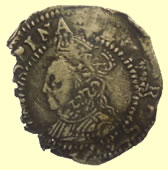  |
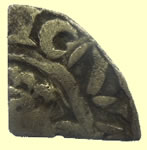 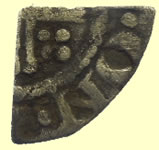 |
||
| 1560-1 Elizabeth 1st hammered silver half groat - Cross crosslet mint mark | 1216 Henry III hammered silver short cross penny Obv ICV****** Rev .ON. |
||
 |
|
||
| 18thC clog fastener | Part of medieval lock ?? | ||
|
 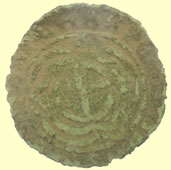 |
||
| 1500-1700 hooked mount | 1586 Hans Krauwincel II Rose orb Jeton HANNS KRAVWINCKEL IN NVRENB |
||
|
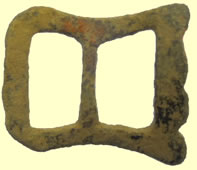 |
 |
|
| Medieval strap end - single rivet fixing | complete cast copper alloy buckle of post-medieval date. The buckle is a double loop asymmetrical shape Circa 1575- 1700 |
1500- 1700 mount | |
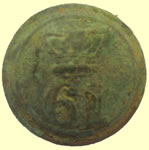 |
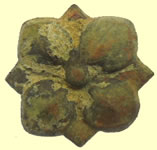 |
 |
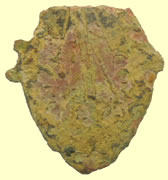 |
61st Regiment of foot O/R's - 1855-1881 |
1500- 1700 mount | 1500- 1700 mount | 17thC clothing fastener |
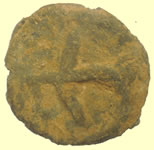 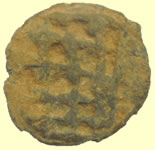 |
  |
||
| 17thC lead token | 1279 Edward 1st hammered silver long cross penny Obv EDWAR ANGL DNS hYB Rev CIVI/TAS/LON/DON London mint |
||
 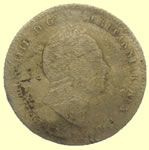 |
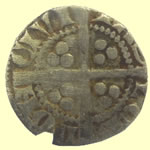 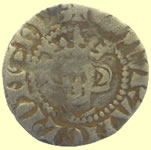 |
||
| 1826 William IV milled silver four pence | 1280-2 Edward 1st hammered silver long cross half penny - Type 2 Egg waisted S Obv EDWR ANGL DNS hYB Rev CIVI/TAS/LON/DON London mint |
||
 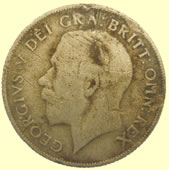 |
 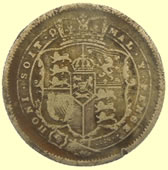 |
||
| 1921 George V milled silver shilling (12 pence) | 1819 George III milled silver shilling (12 pence) | ||
  |
 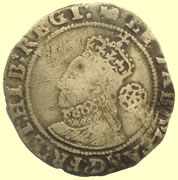 |
||
| 1st to 2ndC Roman Dolphin type fibular brooch | 1596 Elizabeth hammered silver sixpence | ||
  |
 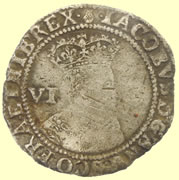 |
||
| 1603 James 1st hammered silver sixpence | 1604 James 1st hammered silver sixpence | ||
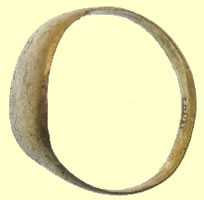 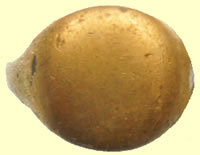 |
|||
20thC 18 carat gold ring - 4.04g Marked 18 carat - Continental |
|||
|
  |
||
Saxon Stirrup terminal Early Medieval 11th century |
20thC Copper Dolphin ring | ||
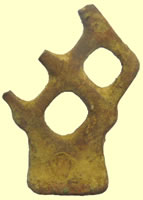 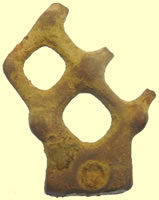 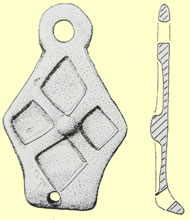 |
|||
10th/11thC Late Saxon stirrup mount - Type 12 openwork version Page 7 - fig 312, David Williams 20.10g, 46.78mm L x 27.47mm W x 4.99mm T |
|||
  |
 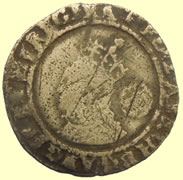 |
||
| 1835 -91 Japan Tempo Tsuho Mon Bronze coin | 1573 Elizabeth hammered silver sixpence | ||
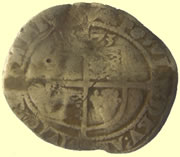 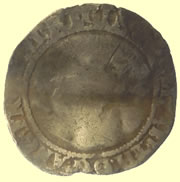 |
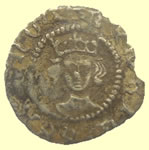  |
||
| 1573 Elizabeth hammered silver sixpence | 1422-61 Henry VI hammered silver half penny Obv hENRIC REX ANGL Rev CIVI/TAS/CANT |
||
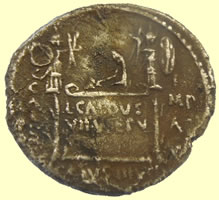  |
|||
Stunning BC Roman silver coin sent for ID 19.1 mm,3.4g A quick reply now and I'll hope to get back to it to tell you some of the details later - there are plenty of details. C. Coelius Caldus - this piece dates to 51 BC. - As you can tell, there's a LOT going on on this piece - most of it has to do with preparations fro the Feast of Jupiter. This is not one of the absolute top-dollar types, but it is a sought-after and somewhat scarce piece with a "catalog value" 2-3 times higher than other, more common or less desirable types from the same era. Cool find! Mark I promised you some more details about this lovely denarius - so here they are. This is an issue given to the family Coelia by Babelon in his original work on Republican coins, classifying them by the families of the issuing aediles - a lower-rank job generally given to younger senators and considered one of the first rungs for climbing the cursus honorum to eventual political status including Consul or Censor, etc. The obverse is a portrait of the younger Caius' namesake grandfather who was consul in 94 BC. The "HIS" on the standard behind his head refers to his military victories in Spain. Not really all that clear on your specimen, there is a standard topped with a boar beneath his chin and COS (for "Consul") beneath the neck truncation. I'm uncertain exactly what the boar represents, but it also relates to his grandfather's exploits in Spain. In front of the portrait, the legend reads C COEL CALDVS - the name of both the moneyer and his famous grandfather. The reverse refers to the moneyer's father who held the office of "Epulo Jovis". The scene depicted is a figure "seated on a lofty lectisternum" between two trophies. The stage is inscribed, CALDVS VII VIR EPVL (VIR & VL in monogram) naming him as a "Septumvir of Epulo" - one of seven officials holding this office simultaneously. I'm uncertain what "epulo" means, exactly, but "Jovis" means "of Jupiter" so it is an honorary religious office of sorts. Vertically on the left it reads C / CALDVS, on the right, I / MP / A / X (MP in monogram) "Imperator, Augur, Deceimvir" and below CALDVS III VIR (LDV in monogram) - "triumvir". There are several sub-types with essentially all these same elements, but variously arranged with legend parts and/or trophies swapping sides of the stage as well as the 2 standards on the obverse swapping location and the HIS on the obverse standard replaced with other abbreviations or by weapons. Yours is RSC Babelon Coelia 7 (out of 6 essentially similar types, differently laid-out, referring to the office of Epulo Jovis numbered 7-12). An interesting piece, to be sure - and one that is generally valued a good bit higher than the average issue of the era. Mark |
|||
 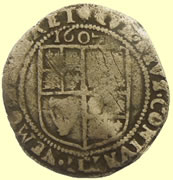 |
 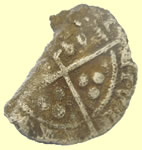 |
||
| 1607 James 1st hammered silver sixpence | 1327 Edward III hammered silver penny Obv EDWARDVS*** Rev CIVI/TAS/***
|
||
 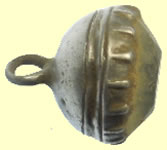 |
  |
||
| 18thC silver button | 1247 Henry III hammered silver voided long cross half penny | ||
  |
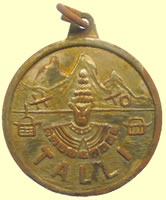 |
||
1247 Henry III hammered silver voided long cross half penny Rev HEN/RIO/ - Moneyer Henri |
This is wedding medallion from India, Usually given to the Bride as a Fertility Good Luck charm. TALLI means MOTHER in Teulugu ethnic group of India. |
||
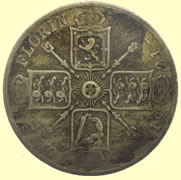 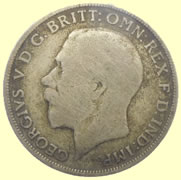 |
 |
||
| 1921 George V milled silver florin (24 pence) | 1901 Dorset Regiment cap badge | ||
  |
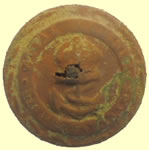 |
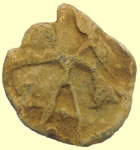 |
|
1247 Henry III hammered silver voided long cross half penny Rev NIC/OLE - Moneyer Nicole |
Royal Marines light infantry regiment |
17thC lead token | |
 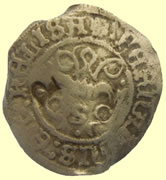 |
|||
15thC Sapinsh hammered silver coin - researching it ???? 1474 -1504 Seville, Spain, 1/2 real, Ferdinand-Isabel, mintmark S plus Obv + RCx.C.T:REE.WA.CRST.CSIO Rev RELISH + FERN*****NIS:ET. |
|||
 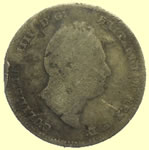 |
  |
||
| 1835 William IV milled silver three pence | 1247 Henry III hammered silver coided long cross penny | ||
  |
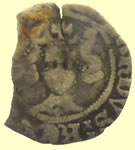 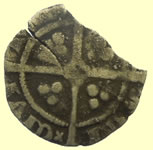 |
||
| 1553 Mary hammered silver groat | 1377-99 Richard II hammered silver penny - quatrefoil in centre of reverse cross - satire stops Obv **ARDVS.REX. ***** Rev xCIVI/TAS/***/ACI - York mint |
||
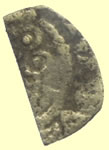  |
  |
||
| 1247 Henry III hammered silver coided long cross penny | 1247 Henry III hammered silver coided long cross penny | ||
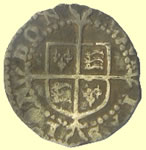 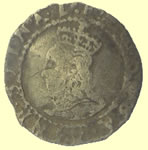 |
 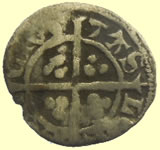 |
||
| 1594-6 Elizabeth hammered silver penny | 1377-1399 Richard II hammered silver half penny Obv + RICARDVS REX ' ANGL Rev CIVI/TAS/LON/DON- London mint 0.48g,14mm |
||
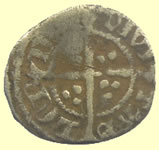 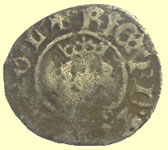 |
 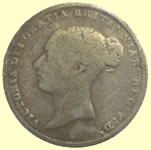 |
||
1377-1399 Richard II hammered silver half penny Obv + RICARD . REX ' ANGL' Rev CIVI/TAS/LON/DON- London mint 0.58g,14.2mm |
1850 Victoria milled silver six pence | ||
  |
  |
||
| 1850 Victoria milled silver half crown (30 pence) | Medieval harness shield pendant | ||
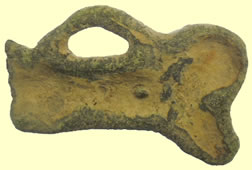  |
|||
| Roman bronze hanging phallic pendant | |||
 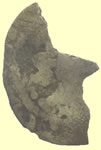 |
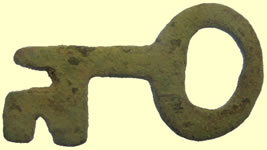 |
||
1279 Edward 1st hammered silver penny - Class 9 star on breast Rev VE**** - Durham mint |
Medieval key | ||
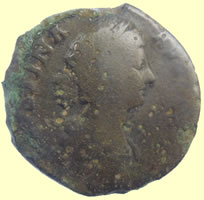 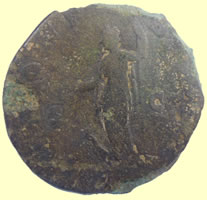 |
|||
Big 1stC Roman bronze sent for ID 31mm,15.94 The weight seems a little low - probably from edge-chipping - but it appears to be a sestertius of Crispina, erstwhile wife of Commodus, eliminated in one of his early paranoid purges. Coins were struck in her honor from 178-182 making her one of the somewhat scarcer Antonine personalities to find on coins. The reverse appears to be Juno, holding a patera and scepter, with a peacock at her feet. It's a little hard to tell, but I believe this to be (and therefore the legend would also be) JVNO LVCINA - "The Light-bringer" - the goddess who helped newborn children see the light of day and is especially asociated with childbirth in the Imperial family during the Antonine dynasty. Mark |
|||
 |
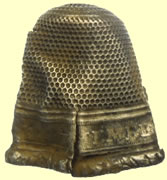 |
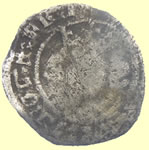 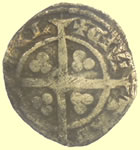 |
|
| 17thC lead token | Victorian silver thimble | 1369-77 Edward III hammered silver penny - Post treaty Obv ** REX ANGL F FRA Rev + CIVI/TAS/**/*Ixx - York mint |
|
  |
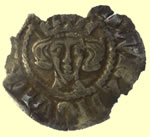  |
||
| 1649 Commonwealth hammered silve rhalf groat | 1279 Edward 1st hammered silver long cross half penny Obv EDWR ANGL DNS hYB Rev CIVI/TAS/LON/DON London mint |
||
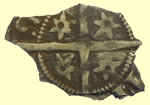 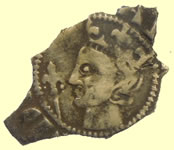 |
 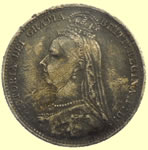 |
||
1280 - 1286 Alexander III hammered silver penny OBV ALEXANDER DEI GRA REV REX SCOTORUM - King of Scots |
1892 Victoria milled silver six pence | ||
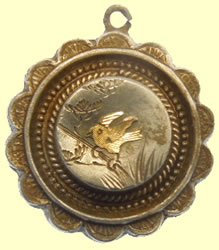 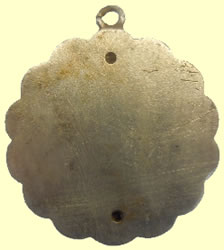 |
|||
| Late Victorian gold and silver pendant | |||
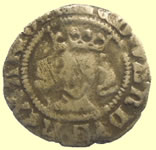 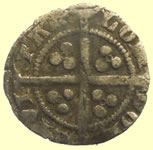 |
 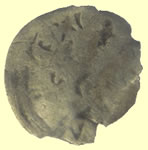 |
||
1351 Edward III hammered silver penny - Pre treaty series A - Extra annulet in one qtr in reverse Obv + EDWARDVS REX ANGLI Rev CIVI/TAS/LON/DON - London mint |
1327 Edward III hammered silver half penny Obv **E+E** Rev /DEN - Aberdeen mint |
||
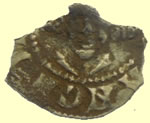  |
 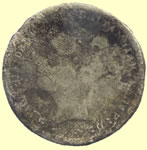 |
||
Medieval Edward hammered silver long cross half penny Obv ANGL D**** Rev /CIVI - Civitas type |
1880 Victoria milled silver six pence | ||
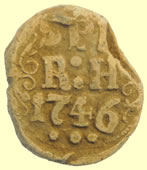 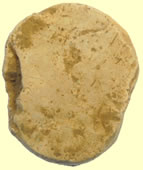 |
|
||
| 1746 Russian lead bale seal - St Petersburg | WWII RAF silver sweet heart brooch | ||
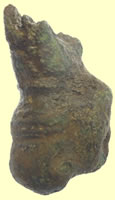  |
|||
| Roman bronze pot foot | |||
  |
 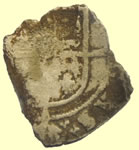 |
||
| 1634 Charles 1st hammered copper rose farthing | Tudor period hammered silver groat fragment | ||
  |
 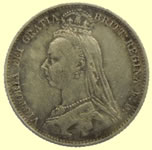 |
||
| Georgian silver button | 1890 Victoria milled silver 6 pence | ||
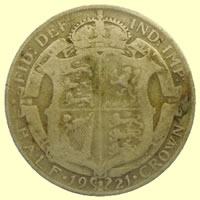 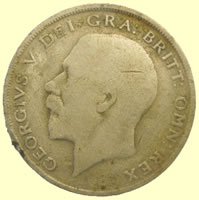 |
  |
||
| 1921 George V milled silver half crown - (30 pence) | 1567 Elizabeth 1st hammered silver sixpence | ||
  |
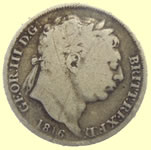 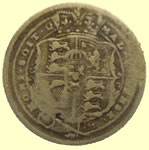 |
||
| C10thC Saxon stirrup mount | 1816 George III milled silver sixpence | ||
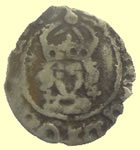 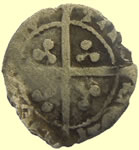 |
  |
||
1488- 1509 Henry VII hammered silver half penny- satires by neck - Double arched crown Archbishop Morton Obv hENRIC DI GRA REX Rev CIVI/TAS/CAN/TOR - Canterbury mint |
2ndC Roman fibular brooch | ||
 |
|||
| Post-Medieval, 1500-1700 spur | |||
 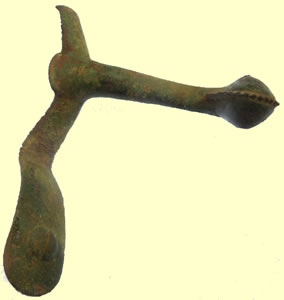 |
|||
| Medieval spur with rowell still attached - rowell type was in use AD1350-1400 | |||
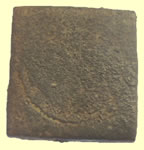 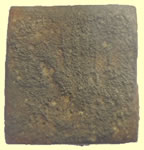 |
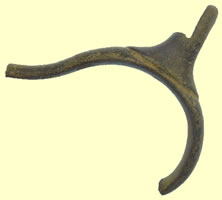 |
||
| 16thC Antwerp hand coin weight | Post-Medieval, 1500-1650 spur | ||
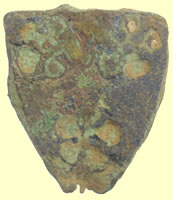 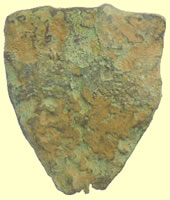 |
 |
||
Medieval enamelled harness shield pendant
|
Medeival mount | ||
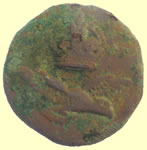 |
 |
 |
|
| WWII RAF button | Victorian copper locket | Essex Regiment enamelled badge | |
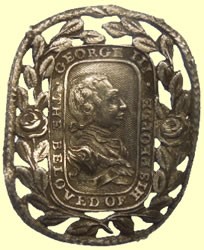 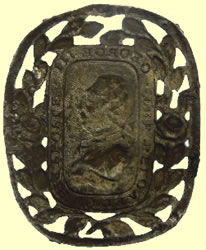 |
|||
Stunning 18thC George III silver mount GEORGE III BELOVED OF HIS PEOPLE |
|||
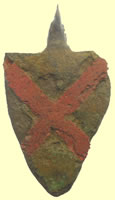 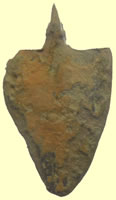 |
 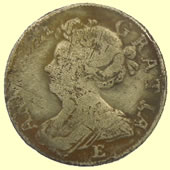 |
||
13th C Heraldic shield harness pendant - researching the owner The actual guy we are looking for is the Uncle of the First Earl of Kildare. The owner of that pendant was Maurice FitzGerald, 3rd Lord of Offaly (1238 – before 10 November 1286) In May 1262, he was among the chief magnates in Ireland summoned to inform King Henry III of England and his son Prince Edward about conditions in the country. He was summoned again in June 1265. Maurice was appointed Justiciar of Ireland on 23 June 1272 following the accidental death of his predecessor, James de Audley on 11 June of that year; his father had served in the same capacity from 1232 to 1245. Maurice himself held the post until September 1273, when he was succeeded by Sir Geoffrey de Geneville, Seigneur de Vaucouleurs. Jim |
Rare 1708 Anne milled silver shilling -Edinburgh mint - 2nd bust | ||
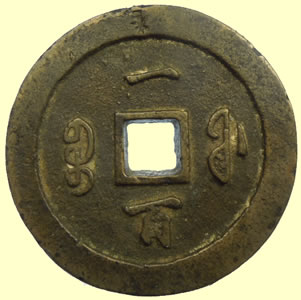  |
|||
Biggest coin/ trade weight ? I have ever seen. The landowner eyeballed this on their land and I said I would try and get it ID'd. It looks like a Chineses cash coin but it is a monster and 1/8 inch thich. 69.5mm dia, 7mm thick This copper coin worth 100 cash is from the city of Fuzhou in China, the capital city of Fujian Province. It was minted between 1853 and 1855 during the reign of the Emperor Wen Zong (1850-61), of the Qing Dynasty. The Chinese characters on the obverse read 'Xian Feng tong bao'. The characters at the top and bottom, 'Xian Feng', refer to the reign title of Wen Zong, and translate as 'Universal Prosperity'. The character on the right is 'tong', and that on the left is 'bao', and together they mean 'Universal Currency'. The characters on the reverse indicate the value of the coin and where it was minted. The characters to left and right read 'Boo fu', which means the mint of Fuchow. Those at the top and bottom read 'Yi Bai', which show that the coin is worth one hundred cash. |
|||
 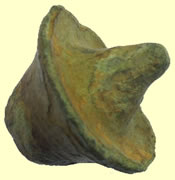 |
 |
||
| Roman bronze mount | Possible medieval ear wax scraper | ||
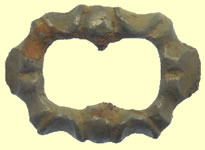 |
 |
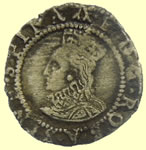 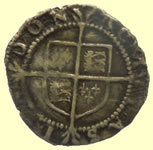 |
|
Cast copper alloy trapezoidal shoe or knee buckle with concave sides 1660-1720 |
Colchester Police button | 1582-4 Elizabeth hammered silver penny - A mint mark | |
 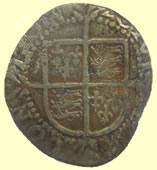 |
 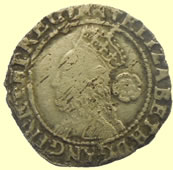 |
||
| 1602 Elizabeth hammered silver half groat - 2 mint mark | 1580 Elizabeth 1st hammered silver three pence | ||
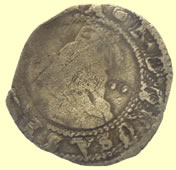 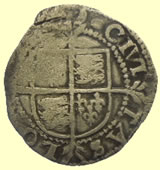 |
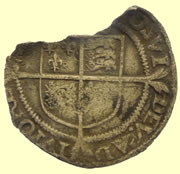 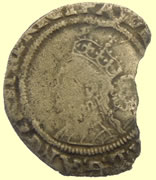 |
||
| 1592-5 Elizabeth hammered silver half groat - tun | 1567-70 Elizabeth 1st hammered silver six pence - Coronet mint mark | ||
  |
|||
| 16thC Tudor S buckle | |||
|
|||
| Interesting Roman decorated bronze implement - serrated thumb grip like on Roman buckle tongues - needs research | |||
 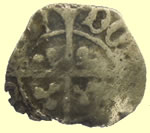 |
 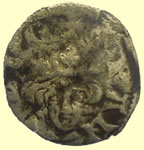 |
||
1422- 61 Henry VI hammered silver half penny Rev IC REX *** Rev L/DON - London mint |
1280 Edward 1st hammered silver farthing - Sterling silver issue no inner circle on Obv side Type 10 bust to edge of flan type Rev ERAN GLIE Rev LONDONIENSIS - London mint |
||
  |
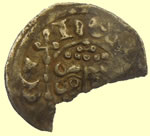 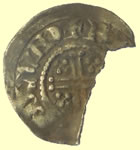 |
||
Taco'd 1180-1199 Henry II hammered silver short cross penny - Type 4 Obv hENRICVS REX
|
1180-1199 Henry II hammered silver short cross penny - Type 1 Obv hENRICVS REX Rev LVND + R - London mint |
||
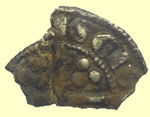  |
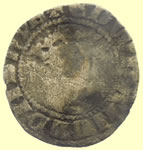 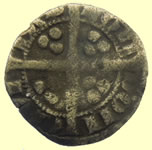 |
||
1327 Edward III hammered silver penny Obv WRR*** Rev SCIE/ - Bury St Edmunds mint |
1279 Edward 1st hammered silver long cross penny Obv EDWR ANGL DNS hYB Rev CIVI/TAS/LON/DON London mint |
||
 |
  |
||
| Georgian watch winder | Taco'd Elizabeth 1st hammered silver penny | ||
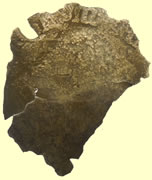 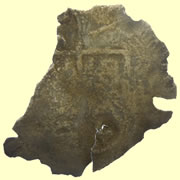 |
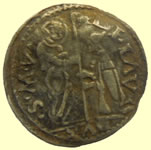 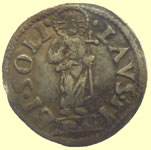 |
||
| 1553 Mary hammered silver groat | 1501-1521). Rev: LAVS TIBI SOLI (Thee Alone be Praised). Haloed figure of Christ holding a cross. Obv: LE LAV DVX S M V (Leonardo Lauredan, Doge. St Mark of Venice.) Doge kneeling before Saint Mark. |
||
 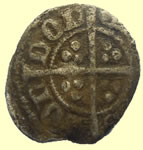 |
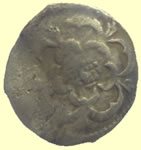  |
||
1377 - 99 Richard II hammered silver half penny Obv +RICARD.REX'ANGL Rev CIVI/TAS/LON/DON London mint
|
1625 Charles 1st hammered silver half pence - Rose both sides no legend Tower mint |
||
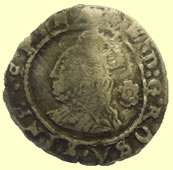  |
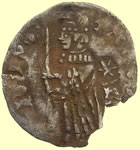 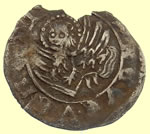 |
||
| 1575 Elizabeth hammered silver half groat | Venetian Soldino issued by Doge Michele Steno (1400-1413). Doge standing left, holding banner, * / D in right field |
||
 |
|||
